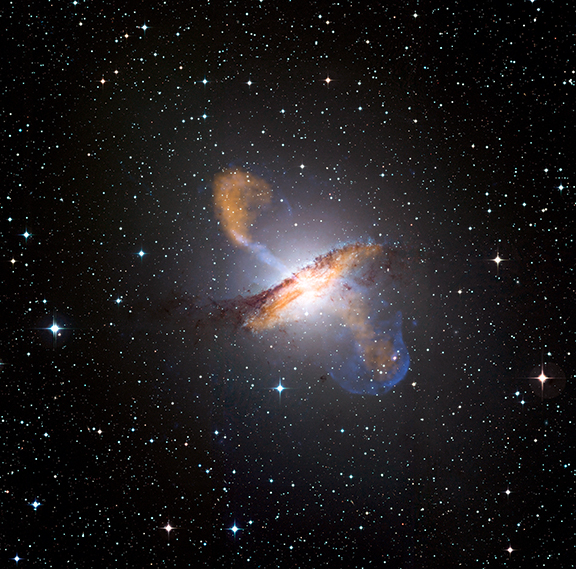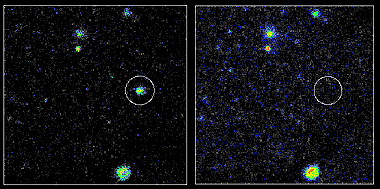About
An astronomical observatory is needed to carry optical observations of potential gravitational source events. For treason, scientists from the UTRGV , the Universidad Nacional de Cordoba (UNC), and Texas A&M University have partnereddevelop an astronomical observatory in the arid highlands of the Southern Hemisphere named Transient Optical Observatof the South (TOROS).
TOROS is located at Cordon Macón in the province of Salta, Argentina. Cordon Macón has ideal conditions of humidity air turbulence which create almost perfect astronomical seeing. Astronomical seeing is a technical term that describes much of the Earth’s atmosphere perturbs the images of stars as seen through a telescope at a given night at a gilocation. This Southern Hemisphere astronomical observatory provides an opportunity to observe a region of the sky not visible from the Northern Hemisphere.









What is Astronomy?
Astronomy is a science that asks and offers answers to many of our fundamental questions about the universe and our place within it. Perhaps, the highest adventure of the human mind has been the understanding of the universe. Each new piece of knowledge rests on the ideas that came before, for this reason, Astronomy is the oldest of the sciences. It has roots extending as far back as recorded history allows us to see. For example, ancient cultures observed the sky to help them keep track of time, seasons, and cycles of the moon – crucial skills for people that depended on agriculture for survival. Nevertheless, the most impressive astronomical advances have come in just the past few centuries and are closely linked to technological progress.
Modern view of the Universe
Just as ancient astronomical observers in the past, modern astronomers are interested in making accurate models of the universe. Astronomers today are able to examine theories and discoveries that led to the widely accepted scientific model of the universe, the Big Bang model, through new understanding of how light, matter, and gravity works. However, this knowledge has a historical path that is long and complex. Our ancestors believed in a geocentric universe, the heavens revolve about a stationary Earth, and it made sense in their day. If you make careful observations of the sky, the celestial objects appear to circle around in the sky. The idea of a geocentric universe changed when people with new understanding of how light, matter, and gravity worked continued posing questions and were confronted by strong evidence of the contrary. The modern view of the universe is that Earth is not the center of the universe but instead it is a planet orbiting the Sun in the Milky Way Galaxy. The Milky Way Galaxy, in turn, is one of billions of galaxies in the observable universe.
Technology Revolutionizing Astronomy
There are many new discoveries made at an astonishing rate due to the availability of technology. For example, more and larger telescopes, including space telescopes than can observe portions of the electromagnetic spectrum that previously was inaccessible. Space telescopes, contrary to what people believe, are not closer to the stars. The distance to the stars is the same whether a telescope is on the ground or space. The real advantage is that if the telescopes are above the Earth’s atmosphere they are not subject to observational problems such as air turbulence and light pollution. The Hubble Space Telescope orbits above Earth’s atmosphere and is able to capture undistorted views of the heavens and is able to observe infrared, ultraviolet, and visible light. On the other hand, larger telescopes are not the only astronomical revolution. Relatively small telescopes equipped with the latest camera technology can capture images just as good as large telescopes in the past. Astronomers as well as amateur observers use a charge coupled device (CCD) camera to capture images of gamma ray bursts, comets, near Earth asteroids, and extra-solar planets. The camera’s sensitivity makes it ideal for minimizing exposure time and maximize signal-to-noise in low light applications such as astronomy. Computers are another piece of the puzzle in the advancement of astronomy. Today, large amounts of data can be analyzed rapidly and efficiently without it being labor-intensive and time-consuming. There are two promising new key technologies, adaptive optics and interferometry. Adaptive optics is used to improve the performance of optical systems by overcoming the distorting effects of Earth’s atmosphere, and astronomical interferometry is a technique used to obtain the resolution of a larger telescope using multiple smaller telescopes. It is without a doubt, that through technology we have learned more about the universe than previously possible.
A Transient and Variable Universe
Previous human generations have lived and walked this Earth, although it is this generation that with the aid of technology is able to study far beyond what was impossible in a human lifetime. Astronomers and their robotic telescopes, both on the ground and in the sky, constantly scan the skies for any rapid changes. These changes might include variations in position, shape, color, and brightness which occur in less than a millisecond. Consequently the discovery of transient phenomenon is no longer left to chance.
Some celestial objects can be both variable in their behavior and transient. Variability and transients can be defined from either an observational or physical perspective. Variables from an observational perspective are objects always detectable but change in brightness on various timescales – seconds, weeks, days, months, and years - and transients are objects that fall below the detection threshold when they are faint. From a physical perspective, variables are objects whose nature is not altered significantly by an event, and transients are objects whose character is changed by an event.
The following is a list of celestial objects that are both variable and transient:
Variable Stars – fluctuation of brightness, either following periodic cycle or undergoing sporadic flaring, due to internal changes or external events.

Flare Star – sudden releases of energy when the magnetic fields within the stellar atmosphere snap into simpler configuration.

Pulsating Variable– These stars display a cycle of expansion and contraction that is created by instabilities in their cooler outer layers, and their period of pulsation is determined by their brightness.
Variable nebulae– Young stars are embedded in nebulae which consist of the remains of the cloud of gas and dust that the stars formed from. The structure of the nebulae cloud does not change but the way it is illuminated does.

Supernovae – A nova, “new star,” is the outburst that marks the final collapse of stars. A supernovae is an enormous outburst at the end of the star’s life. In order to be visible with the unaided eye it would have to erupt within our Milky Way Galaxy.

Gravitational accretion of matter– The accretion of matter happens under the force of extreme gravity onto compact objects such as black holes and white dwarfs of neutron stars. The energy output depends on irregularity within the fuel supply and the process of accretion. Sources change brightness with time; they burst, flicker and pulsate.

X-ray transient– The first X-ray transient was discovered during a rocket flight in 1967, as a time-varying source that had not been visible in that part of the sky two years previously. It then completely disappeared four months later… to then be recovered briefly in 1968. X-ray transients can brighten by a factor of up to 105 on timescales of minutes to hours.

This is an X-ray image of ROSAT observation of a portion of the Andromeda Galaxy. The source shown in the circle is RX J0045.4+4154, a recently discovered recurrent X-ray
Gamma-ray bursts– GRBs are the most energetic form of electromagnetic radiation and are apparent in lower-energy wavebands, such as the X-ray, radio and optical. The afterglow can last for several weeks before fading completely. This light can be observed with other telescopes that have a much better ability to pinpoint the exact position of the source than gamma-ray detectors, and thus give us a much better chance to identify the cosmological object responsible for the initial flash. The source is believed to be extragalactic.

The jet from a gamma-ray burst emerging at nearly light speed. Image credit: NASA / Swift / Cruz deWilde.
Conclusion
Variable and transient sources are detectable in radio waves, microwave, infrared radiation, visible light, ultraviolet light, x-ray, and gamma-rays. Observational facilities around the world with their rapid advances in detector technology, computer processing power and data storage are able to probe-larger areas of the sky.
For more information view the following websites:
http://www.gresham.ac.uk/lectures-and-events/the-transient-universehttp://www.lsst.org/files/docs/sciencebook/SB_8.pdf
http://www.nasa.gov/centers/goddard/news/gsfc/spacesci/pictures/2003/0702pulsarspeed/0702ssu_glossary_prt.htm
http://spie.org/x112477.xml